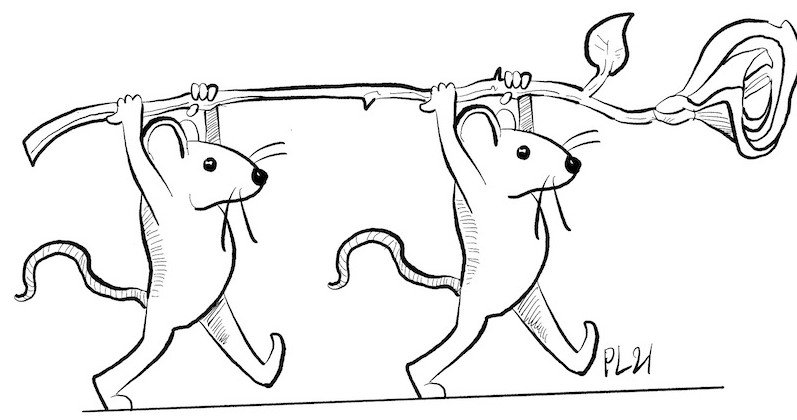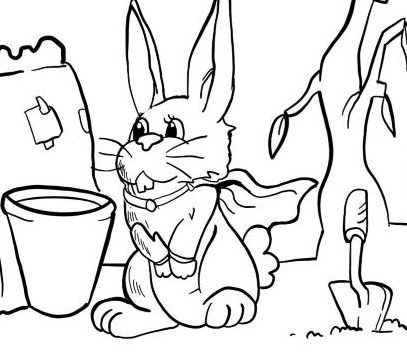DIY kidslit:
10 easy steps
Publish your own DIY kidslit!
low-cost!
cancel culture-free!
climate friendly!
Here’s how:
Write your story (5 drafts, minimum)
Hire a super-talented illustrator (I hired Patrick “the Gunnarman” Lepage back when he was a third-year design student in Ottawa)
Design: Lay out the text and illustrations using your favorite word processor
Edit (at least 3 passes; don’t skimp!)
Proofread (start at the end of the story and slowly read backwards to avoid context errors)
Save to pdf
Launch your favorite recording software (I use Audacity, which is free to download)
Have fun playing with the voices of your characters as you narrate your story (I’m a ham so this part is fun!)
Re-record and edit the audio file to correct mistakes, remove coughs, sneezes, pauses, stomach growls etc. (unless they’re part of your story)
Upload the final pdf and audio files to your own website (My host is Squarespace, which provides fairly easy-to-use templates and lots of tech support.)
Remember: DIY kidslit is for kids so write what children want to read not what publishers think will sell.
Tiggy and Kyle
Follow the adventures of Tiggy and Kyle and a cast of characters that includes their best friend, a scientist named Emma, a chicken named Lucky and a choir of once-extinct Loony Toony Unruffled Gobbybeaks!
Rhoda’s Garden
Join Rhoda rabbit and her friends in Rhoda’s Garden, a story of love and friendship for creatures young and old!
Surprising Santa
What do you get Santa, the man who has everything?
In A Surprise for Santa 5-year-old Emma and 6-year-old Erik come up with a surprising solution!
Spreading joy
My 8-year-old granddaughter, Norah Rose Shirley MacDonald, and I worked together to create Norah’s Special Gifts. It’s the story of a little girl who sets off on her own to bring her Grammy a vase full of her best roses. Along the way she meets six meadow creatures, each in need of a rose. By the time the generous little girl arrives at her destination, she has given away all her roses, but has transformed the memory of each rose into a story, which she gifts her Grammy instead.
Although I took on the task of plotting my granddaughter’s story, akin to drawing the schematic for someone else’s creative design, make no mistake: Norah’s Special Gifts is Norah Rose’s.
Thanks again to Patrick Lepage who drew fanciful characters from his bottomless magician’s hat!
The B word
I wrote the original version of The FGB for my eldest granddaughter, Kaylah Fassbender, in time to present it to her on her sixth birthday. The full name of the FGB refers to a certain very famous fashion doll whose name starts with “B”: Fairy Godmother B-----. In the original version I spelled out the actual name of the very famous fashion doll. Back when Kaylah was little (she’s now 14) I bought every B----- I found in The Hub, our local thrift shop. At one point, her collection included about 52 of these dolls, along with their various accessories and back stories that Kaylah herself invented.
Kaylah loved The FGB.
I sent the original version of The FGB to a certain toy company whose name starts with “M” five years ago because I knew I would need approval from M----- if I wanted to submit the story to publishers.
M----- owns the exclusive rights to B-----, which FYI reflects the state of affairs between powerful men and their nubile consorts in some parts of the real world. M----- is very possessive and very litigious.
As I skimmed the pending lawsuits on the Canadian trademark office’s website I couldn’t help noticing page after page of litigants that unwittingly used variations of B----- in their products or services that are completely unrelated to the fashion doll industry.
Therefore, along with the original story, I sent M----- a proposal in which I suggested that allowing such a story to be published would enhance the company’s prestige by showing the children who used its products that M----- has a sense of humour. I pointed out that the company’s famous doll, along with the bicycle, are likely the most useful, the most inspirational, and most memorable toys of the 20th century. I warned that if I wasn’t allowed to publish the story in its original form, I’d simply change the name of the eponymous character.
The verdict arrived with lawyerly certitude: Not a chance. I changed the name of the eponymous character to Fairy Godmother Beauty. This upped the spoof factor in my story because every female my age and younger knows very well who Beauty really is. I don’t think M----- can trademark beauty, but I’m sure the company will send me a Cease and Desist if I’m wrong.
The power of the differently abled
Two of my distant relatives were born with afflictions that confined them to wheelchairs all of their lives. One was born with cerebral palsy, and the other with muscular dystrophy. Both grew up in loving families with little discretionary money to spare. The latter died young a number of years ago, and it was he who inspired Kaylah and Harley, the story I wrote for Kaylah to mark her seventh birthday. This young lad seemed optimistic, always wore a happy grin although he must have foreseen as a youngster that his life would be shorter than most. His parents couldn’t afford a motorized wheelchair so he got around on the old-fashioned kind, a rickety contraption that needed plenty of muscle power. It was hard work for a boy so differently abled but he never seemed to feel sorry for himself, just kept on smiling and getting on with making the best of the short time he was granted.
When I presented Kaylah with Kaylah and Harley, her disappointment was obvious. She’d been hoping I’d write a sequel to The FGB, the story I’d written for her sixth birthday. “I don’t do sequels,” I explained. “The FGB has moved on.”
I think the eponymous Harley is a far more interesting character than a fairy godmother. Why? Because he doesn’t rely on magic to get where he wants to go.
Team work
Kaylah Fassbender, my eldest granddaughter, co-authored Ostriches Run in Our Family with me a few years ago. The spark for the story arrived out of the blue way back when Kaylah and her dad, my son Bryant, lived close by. Their yellow house backed onto a large farm in Blakeney, a small village just outside Almonte, Ontario. Among the various animals wandering around the huge space was an ostrich. I’d often find the ostrich peering over Kaylah’s fence, staring pensively at Kaylah’s small flock of chickens. The ostrich would run away when I approached, and the speed of its running gave me the title of a story idea. All I needed was the story.
I mentioned all of this to Kaylah. “Let’s write the story together,” she said. And that’s what we did. For two months Kaylah and I bounced story ideas around each Tuesday when she came to visit. She opened doors to the plot that I hadn’t imagined, conceived the cast of characters I would never have dreamed up myself. She created Zoo Haven, a retirement home for former circus animals, likely inspired by Kaylah’s own visits to her late great grandmother in a local long-term care home. (This was before COVID-19.) Nannaphant, Grampa Greybeard, the Uncle Monks, the Old Keeper and of course Flora the ostrich are all Kaylah’s literary children, and it was she, as their creator, who told their back story.
I can’t describe how much fun I had working with my granddaughter on this story, and I suspect she also had fun. I could see the brightness in her eyes when we were really lost in creative flow, lobbing ideas at each other. I sent the finished typescript off to a few small publishers, mostly to show Kaylah how the publication process worked, and was happy to read the compliments they returned. One publisher apologized for keeping our story for four months and went on to explain the story was short listed for publication. It took the full four months to make the rounds of reviewers. In the end, our story wasn’t selected but we got pretty darn close!
You’ll notice the humans in the story don’t actually hear the animals talking to each other. That’s intentional: one publisher insisted it wouldn’t read anything that included anthropomorphic talking animals. I guess that means that the spider called Charlotte and the bear called Winnie the Pooh wouldn’t make the cut for that publisher either. So go ahead and imagine that you can hear the animals in our story talking to each other. (That’s what we do.)
Brother cat
Norah Rose, my 8-year-old granddaughter, and Emma, her 4-year-old sister, have a 9-year-old brother named Hinty. Hinty is a Maine coon cat. Maine coons are a special kind of feline, smart, with an emotional range that I believe verges on human. I find Hinty’s appraising stare unsettling. Something about those eyes of his suggests he has me figured out, warts and all. I sense the same deep intelligence in primates when they stare into the camera in documentaries. Norah Rose and Emma have never known a time when Hinty wasn’t part of their family. They feed him, talk to him and worry about him. He in turn protects them, nipping the heels of those he presumes to be interlopers. Sometimes he gets it wrong. I have the scratches to prove it.
There is an old photo somewhere in my archives of Norah Rose and Hinty staring at each other, eyeball to eyeball, with an intensity that told me they were communicating something outside my understanding. The way the pair played together, the way certain music triggered Norah Rose to shake her booty to the beat and the way Hinty seemed to be keeping up with his little sister reminded me that there is a lot going on between sentient but nonverbal beings that is beyond our ken. All of that inspired The Birthday Cake Cha Cha, in which the toddler Norah Rose and Hinty solve an almost insurmountable problem to save Momma’s birthday.
The Republic of Wisdom
Socates the wise cat
Heidi and Susie, my 9-year-old twin granddaughters, are a force majeure in the house they share with their three siblings, a space ready-made for them but that takes some getting used to for those accustomed to tranquility. There is a blue Siamese named Kyle, a Maine coon named Tiguan, a chihuahua named Odie and a chicken named Queen who has her own bedroom-box in the family room where she sleeps every night to escape the mean girls in the outside coop. There are free range Guinea pigs, Mary and Oreo, and two ducks, one Wiggle, the other Quack. The children take this in stride. There’s an order to the chaos though you have to look hard to find it.
The twins don’t amuse themselves with toys. Why would they bother? What toy could compete with all that going on under their roof? Of course, they have bikes but that’s about it, toy-wise. What preoccupies both is the daily business of finding inventive ways to drive their mother, my elder daughter, batty. There are few days when they don’t come up with something new.
All to say the antics of the real Heidi and Susie, their comic misunderstandings of why things happen as they do, is what inspired their fictional selves to get in and out of trouble in The Republic of Playdough. Socates, the story’s deus ex machina, offers young readers wise counsel, but the small black cat with the white socks cannot replace the wisdom of parents who might want to discuss some of the safety issues that bedevil the characters in the story.









